NYC’s Forgotten ‘War on Christmas Trees’
Discover how an obscure holiday crackdown affects festive street vendors today!


During a recent wardrobe overhaul I realized that it was time to advance past the fashion delusions of my early 20s and enter proper adulthood attired in the finest formalwear. My father would laugh if he knew I tried shopping for suits again, as my past attempts yielded many cringeworthy outcomes. The female reader unfamiliar with the process should ask a male friend about the pains of ready-to-wear suit shopping. To this day, the appeal of bespoke tailoring remains indubitable: full client control of the customization and alteration process results in a personalized product and affords a rare peace of mind. It was my turn to find a tailor.
Unlike London’s famed and thriving Saville Row, New York’s original 3,000 big garment factories (with over 100 workers) have been gradually eliminated, largely in the wave of broader industrial outsourcing. My quest was brief: there is only one remaining unionized menswear garment factory in New York of that size.
When Martin Greenfield first came to work as a floor boy at 239 Varet St. in 1948, he didn’t plan on lingering for more than was necessary to finish his evening English classes. However, instead of getting on with his life plan upon mastering the language, Greenfield remained at GGG Clothes and eventually worked his way up to buy out the firm, and the factory, in 1977. Since then, Martin Greenfield Clothiers watched their immediate competition fold by the thousands. During this time, the biggest change 239 Varet St. saw was a shift from gas to electric lighting.
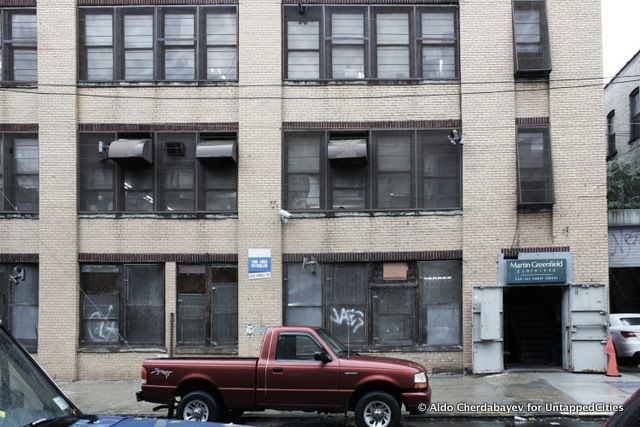
Main entrance at 239 Varet St. in Brooklyn
While waiting for my appointment, I observed an early fitting for a heavily tattooed frontman of a local band. He was trying on his new jacket in traditional navy herringbone, perhaps chosen to complement his Santa Claus beard. Once the musician paid the tailor what looked like a $820 cash advance in a roll of twenties, it was my turn to burden the clothier with all my wants and constraints. Within 20 minutes, we had all my measurements taken and features decided on. I was invited back for a fitting in 5 weeks.
Inquisitive banter with the staff yielded that Greenfield Clothiers is a dual model business. In part, they attire a heterogeneous mix of gentlemen seeking to invest in the waning custom of artisan clothing, be it a first-time buyer like myself, a billionaire tycoon who orders 3 suits each season, or Michael Bloomberg. Today, for the most part, Greenfield’s work is commissioned by designers such as Rag & Bone and Band of Outsiders, and by costume designers by productions like Boardwalk Empire. The fabrication process is identically thorough for both bulk and individual orders, head of operations and son Tod Greenfield assured me as we toured the open-plan workroom.
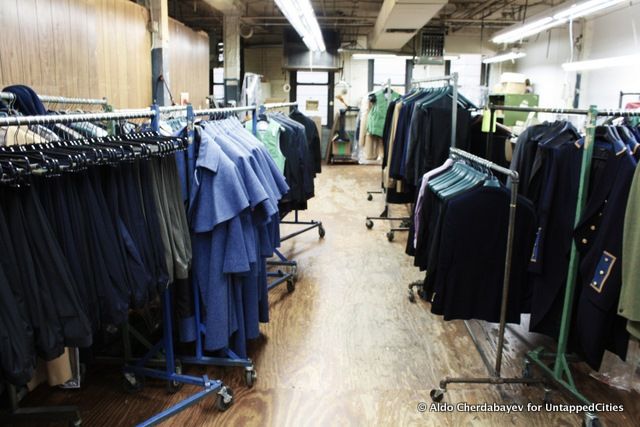 Completed garments for Band of Outsiders, Rag & Bone, and the U.S. Military
Completed garments for Band of Outsiders, Rag & Bone, and the U.S. Military

Stock Room
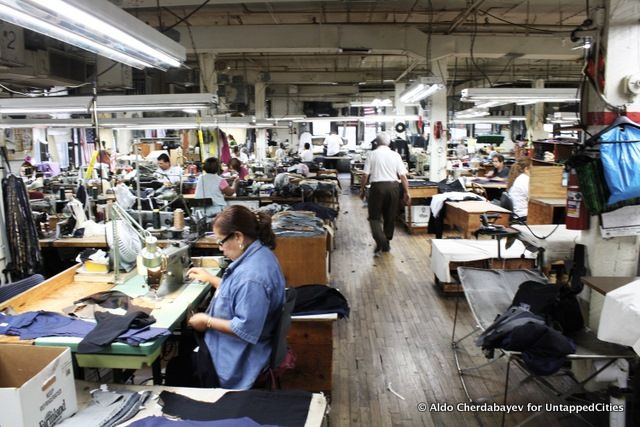 Entrance to the second floor workroom
Entrance to the second floor workroom
The factory employs 120 workers, with the median tenure exceeding 20 years. As Tod recalled, his family business experienced representative immigration patterns of skilled workers in New York. “It’s always been an immigrant industry,” he conceded and offered a loose chronology of migration trends, starting with Eastern Europeans after the World War, followed by workers from Greece, West Indies, Puerto Rico, Mexico, and China. In line with subsequent seniority, the supervising positions are now held primarily by European workers.
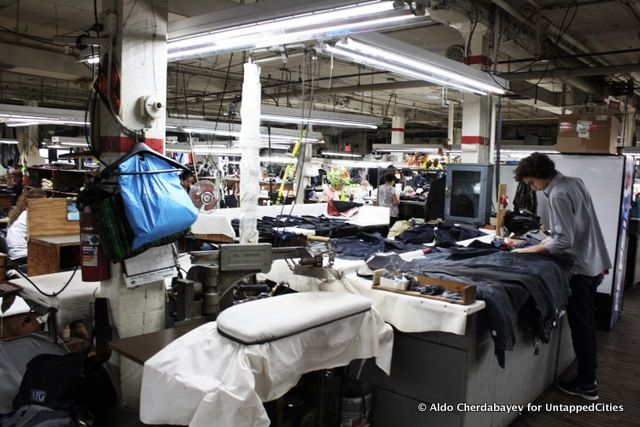
More recently, Dominica and several Central American states that relied heavily on now-outsourced light industries faced a surplus of highly skilled labor. Many of these workers ultimately ended up relocating to 239 Varet St. The appeal of Greenfield is transparent: as a unionized factory, all workers are compensated with a living wage and enjoy health plans and paid vacations. Ted notes that most employees are also able to finance a college education for their kids.

The factory is surprisingly efficient for such a laborious process: specialization is extreme, as each seamstress is responsible for a single operation, such as pocket stitching. The supervisors float between clusters of workstations to ensure quality, and Martin Greenfield himself is found in the workroom daily to “keep things going,” as his son put it. The tools in use have not changed much over the years. The company owns a range of older machines, said to allow for more advanced operation by expert tailors, especially when working on diverse garments. Since all clothing is hand made from scratch in the same space, Greenfield Clothiers achieve an enviable control over quality. The result not only warrants the factory’s continued existence, but preserves the intrinsic qualities of bespoke that demarcate it from machine production. Let the 5 week countdown begin.

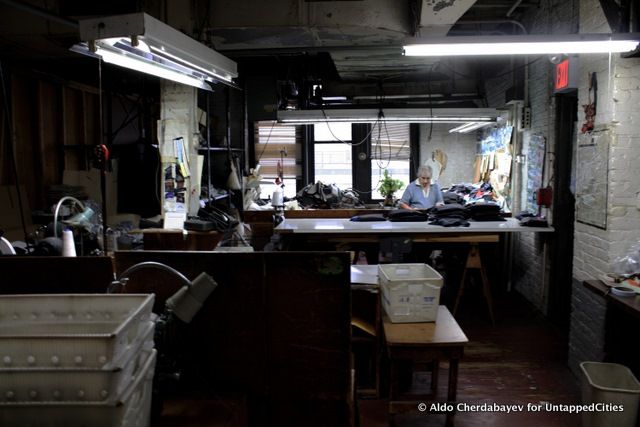

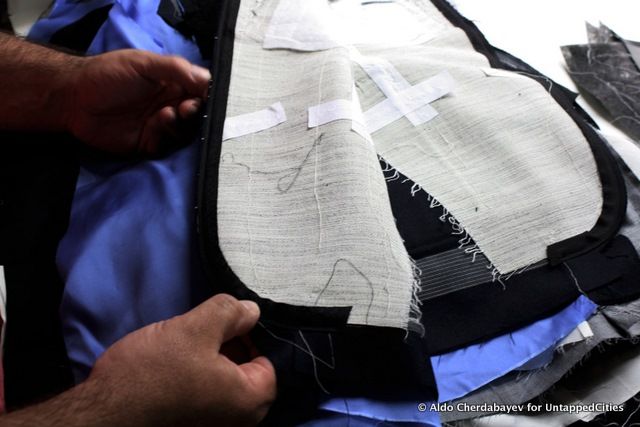
 Finished U.S. Armed Forces cadet coat
Finished U.S. Armed Forces cadet coat

Subscribe to our newsletter